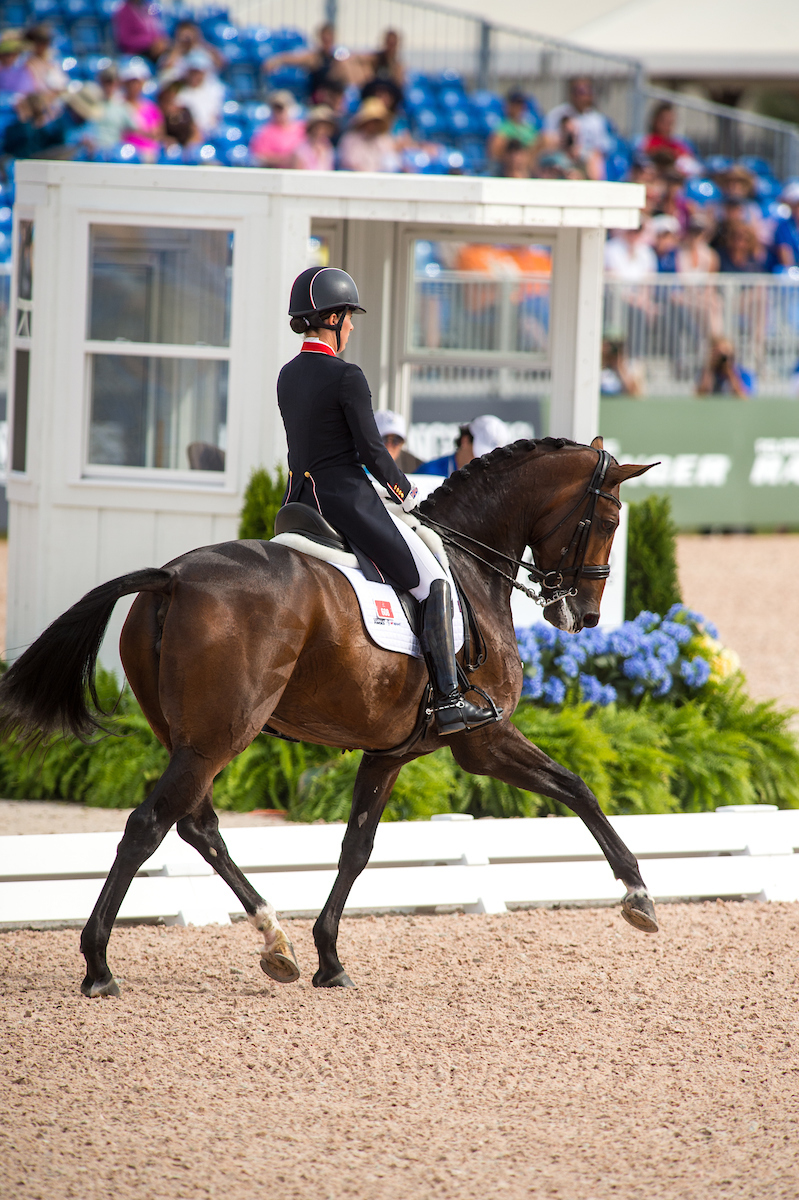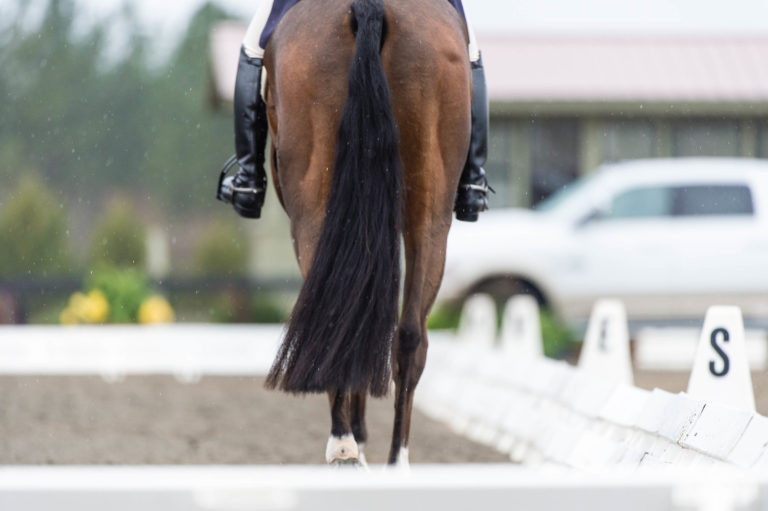Do you remember taking the little spring out of your ballpoint pen? You probably compressed it and watched as it sailed effortlessly across the room. Everyone did that at least once long ago, before considering the science of coiled springs. This simple scientific principle has a lot to do with why some dressage riders can reliably go down the centerline and score 10 percentage points higher than the average rider. They know how to get effortless, elegant “boing” from the horse. And it is free. No pushing or squeezing is necessary; in fact, that is detrimental. Timing is necessary.

It has everything to do with the moment when your horse’s inside hind leg is engaged. (As an aside, many people think “engagement” has to do with the amount that the hocks bend—called “hock action.” Others think it is the degree of hind-leg reach under the body—called “reach.”) However, the moment of engagement is when the joints of a hind leg are bent and the hind foot is on the ground carrying weight. That is the coiled spring. The savvy rider can compress that spring
just a tiny bit more by sitting heavy at exactly the right moment. Then, when the springing hind leg lets go, she gets free boing.
Coiled springs are shorter than when they are not coiled, so when the hind leg is coiled and carrying weight, the hindquarters lower. This coiled spring of a hind leg enables the horse to thrust, and when the rider has control over the engaging moment, she gets free boing. She can, if she wants, add impulsion with her leg at the thrusting moment—as the hind foot leaves the ground.
This sounds easy, but the timing and the conditions have to be just right. Here are a few of the stars that need to be aligned before you can have free boing:
• The energy of the horse needs to be traveling “through” the horse’s topline.
• The hind foot of the engaged hind leg needs to step under the rider’s seat. Otherwise, the weight in the rider’s seat just makes the horse’s back hollow instead of sitting on the coiled spring.
• The rider has to have a good enough seat and position so her seat isn’t noisy and heavy, because—as always—the release is as important as the weight aid.
•The rider—either by nature or by intellect—needs to know the moment to add weight to her seat. This is the “sitting moment” of, for example, the rising trot. And she can’t be squeezing or giving random leg aids at the same time. Mirrors or
an eye on the ground can help the rider learn how to feel the difference between the moment of engagement and the moment of thrust of the inside hind leg.
• The rider must know to release the seat and ride the thrusting moment to allow the boing.
• The rider must know to switch directions and exercise the engaging and thrusting moments on the left and right sides equally so the horse develops straightness.
Whew! That’s a lot, and I probably forgot something. But here’s the beauty of it: When the rider sits very well, much of these aids are given passively because they are created by the horse’s body as it moves within the rider’s aids. Horse and rider are one, well-oiled machine. It’s really free, and it’s so effortless, elegant and beautiful.











